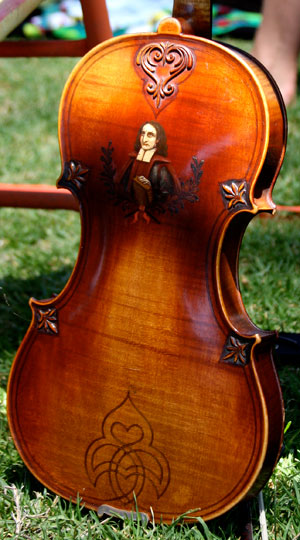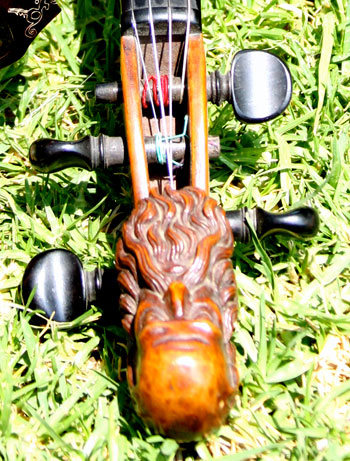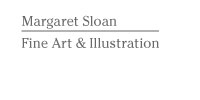
This fiddle I saw at the Good Old Fashioned Bluegrass Festival. The lady bought it in the 1970s. She thought it was a Vuillaume. Maybe.

The name Vuillaume could mean anything. It’s like finding a fiddle in your grandmother’s attic, peering through the f-hole and seeing a Stradivarius label. Probably not a real Strad. Lots of people have made lots of money selling instruments with phony labels. And musicians tend to give their instruments distinguished pedigrees.

But whatever this fiddle’s ancestry, it is a lovely piece of work, with a beautifully carved scroll, and cunning carved corners on the back, and Celtic-looking purfling. The scroll does place it sometime during the 19th or early 20th century—a time when ornamentation was popular on all things, and ornamented scrolls decked out many fiddles.
I’m not a violin connoisseur, so I didn’t know enough then to look closely at the painting on the back to see if it is inlay, painting, or both.
The most important things about a fiddle are how it feels when you play it, and how it sounds. An instrument can have the beauty of Grace Kelly, but if it shrieks like a toothless angry old witch, then it’s of no use.
The owner of this fiddle treated it with the casual attention you’d give a favored pet. It sat next to her as she sat listening to the music. She carried it around, cradled in her arms. She loved it. She said it had a great sound.
That’s all that’s important.
If you think this blog might be of comfort to someone, please share it
 I’ve been working on this watercolor of my friend, Cyndi, holding her fiddle. Finally it’s finished (oops, except for strings. I’m going to add those using chalk).
I’ve been working on this watercolor of my friend, Cyndi, holding her fiddle. Finally it’s finished (oops, except for strings. I’m going to add those using chalk).



